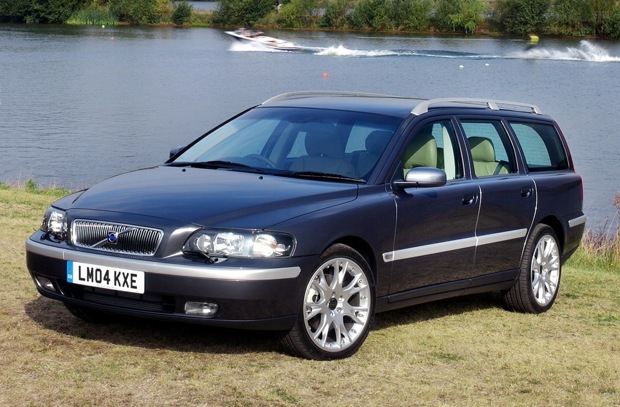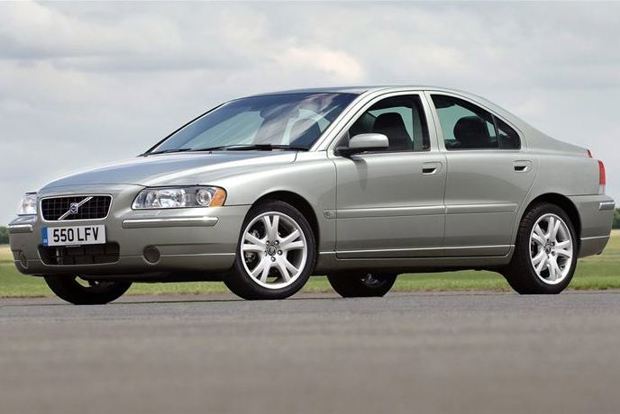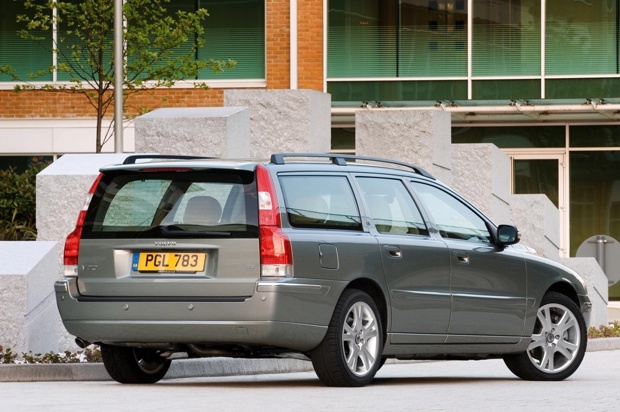Future Classic Friday: Volvo S60 and V70

No one knew it at the time, but the 1992 Paris Motor Show was a huge turning point for Volvo.
That's when the Swedish company revealed its ECC concept car (Environmental Concept Car), which at the time was seen as more of an engineering study than a styling one.
It had a hybrid electric and gas turbine powertrain, with a body made mostly out of recycled materials.
The concept was a clever one, but it was the styling that would find its way through to production. Penned by British designer Peter Horbury, whose first experience for Volvo was with the Volvo 480ES, the ECC would dictate the brand’s new face.
While there had been previous Volvos that diversified away from the traditionally squared-off look – Horbury’s Volvo 480ES being one – it was the first glimpse of the style that would take the company completely away from its ‘boxy but good’ image that it had held since the Volvo 140 series made its debut in 1966.
The first production iteration of this would appear six years later in the form of the Volvo S80, a flagship executive saloon that was touted as Volvo’s rival to the BMW 5 Series and Mercedes E-Class.
It was a handsome car and a good value one, too, but it was always a bit of a niche.
It would be a dual-pronged attack on the market two years later that would mark the true turning point for the Swedish brand, with the new Volvo S60 and V70 models replacing the Volvo 850-based S and V70 saloon and estate.

The Volvo S60 was a BMW 3 Series rival, with styling that was every inch a scaled down Volvo S80, right down to the scalloped rear lights and interior contours.
It was a handsome and elegant design, with a good feeling of solidity and quality that defined the Volvo brand.
The Volvo V70 was, if anything, a tougher one to pull off. Volvo needed to create a car that kept the new design language, but would also not put off the more traditional Volvo estate car buyer – after all, sturdy station wagons were the company’s big USP, especially to Britain’s middle classes.
Unlike other compact executive cars, where the saloon was always the big seller, the Volvo V70 took almost 70% of the S60/V70 model split, such was the popularity of the traditional Volvo estate, so the company had to get it right.
And they did. The Volvo V70 managed to look sleek, modern and stylish, yet did so with a sturdiness and voluminous cargo carrying capacity that no other could match.
The 2002 Vauxhall Vectra was the only car on the market that could match it for load carrying ability, but it couldn’t match the Volvo V70’s image or residual values.
Then there were the driving characteristics. All Volvo S60s and V70s drove well, with 2.0-litre turbo and 2.4-litre normally-aspirated petrol engines and the five-cylinder D5 diesel taking care of the mass market, but it was the turbocharged five-pot T5 that was the real star of the range, building on the success of its Volvo 850 T5 and V70R predecessors to deliver astonishing performance and impressive levels of grip.

It’s no surprise, then, that Volvo’s biggest fleet customers were the UK’s police forces, who loved the Q-Car element of the Volvo S60 as much as they enjoyed the unbeatable usefulness of the Volvo V70 – the patrol pursuit car of choice for forces across the country.
Not content with reshaping the mould of Volvo, the company went a step further in 2001 with the Volvo XC70, regarded by many as the first commercially successful crossover.
Based on the Volvo V70, it had a raised ride height, four-wheel-drive and plastic cladding around the lower bodywork, making it an instant hit with the green welly brigade.
For years, the Volvo S60 and particularly the Volvo V70 were hot property on the used car market, but time has shown them to not be as reliable as their forebears, and while there are still plenty of Volvo 740s and 960s pottering around with interstellar mileages on them, the later cars don’t seem to cope quite as well with the long haul.
Mechanically, they’re generally pretty good, but problems with ECUs and body electrical systems are rife and difficult to diagnose, meaning that repairs are often uneconomical. And that’s a shame, as it means their numbers are declining rapidly.
In a few years, there’ll be hardly any left, but there’ll definitely be a following, be it from nostalgia driven 30-somethings who were ferried around in them as kids or fans of unlikely performance cars.
Indeed, the T5 variants already have a pretty decent fan base. So while classic status is probably still a while away, the cars that truly changed the face of Volvo certainly have their place in the annals of motoring history. Find a classic Volvo for sale.
Can I apply for emissions-based road tax on a 1998 Mercedes-Benz A Class?


